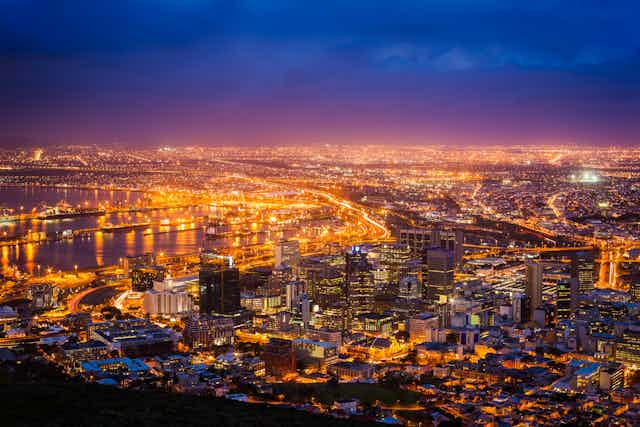South Africa has a new energy plan which covers 2019 to 2030. It follows cabinet’s recent adoption of a new Integrated Resource Plan for electricity generation.
The plan – which builds on a relatively well-received draft announced last year – makes some significant advances in changing South Africa’s energy mix. For example, it significantly ups the contribution of wind as well as solar power to South Africa’s overall energy allocation. The production of power from wind is expected to grow by 900% by 2030, and power from solar photovoltaic by 560%.
In some other respects the plan is disappointing. The biggest problem is that coal power generation continues to be dominant. While coal generating capacity would drop from a current 71% to 43% in 2030, this is viewed as far too little to make a meaningful contribution to combating climate change.
What has dominated headlines about the plan, however, is the nuclear power option. This has been very misleading as the plan effectively says nothing concrete about new nuclear. No new nuclear plants are envisaged to come on line before 2030, while the plan is deliberately non-committal for what happens afterwards. This is because there are too many unknowns and potential developments that could affect the post-2030 scenario.
At this stage nuclear is seen as one option for post-2030, but no more than that.
Nevertheless, even the mention of nuclear – and that it remains an option in government’s eyes – causes a stir. In a recent statement from the Minister of Mineral and Energy Resources Gwede Mantashe, he noted that nuclear was still on the table.
Confusion over what role nuclear power would or woulnd’t play was made worse by the fact that an incorrect version of the plan was gazetted. It was withdrawn, but not before it had created a hue and a cry.
Sensitivities around nuclear power run high in South Africa. This is because former President Jacob Zuma was committed to new plants being built, with advance plans reportedly made with Russia to sign a deal. The end of his presidency led many to believe that the nuclear power debate had been laid to rest.
The nuclear picture
South Africa’s only nuclear power plant is a 1.8 GW facility at Koeberg in the Western Cape that was completed in 1984. It was originally expected to be decommissioned in 2024, based on the normal lifespan of nuclear plants, which is 40 years.
The plan proposes that the plant’s decommissioning be postponed to 2044. The planned extension of Koeberg’s life cycle was however flagged in the earlier drafts of the country’s energy plan. In that sense, it doesn’t represent a new intensification of the nuclear programme in South Africa.
There is a fair case to be made to extend nuclear plant operations by a further 20 years. Reasons include the fact that an already operational nuclear plant produces electricity quite cheaply. In addition, nuclear energy only has minimal emissions contributing to climate change.
The plan also says nothing specific about moves to reactivate South Africa’s collapsed programme of trying to develop small-scale nuclear reactors. This too was something the Minerals and Energy Minister highlighted in some of his speeches. The idea of small-scale nuclear has gained traction in recent years, partly due to endorsements by influential individuals such as Bill Gates.
South Africa took the lead on this technology 1994 and 2010 when it sought to develop what became known as the Pebble Bed Modular Reactor. The project collapsed in 2010 after failing to make tangible progress or to secure a critical mass of investors. The government terminated the programme despite having invested R9 billion.
The failure of the project was a blow to the nuclear sector in South Africa. But calls for its revival by die-hard nuclear advocates persisted. These were not without success, largely because the nuclear lobby was backed by Zuma. But nothing formal has come of it.
Life in the nuclear lobby?
There still appears to be some life in the nuclear lobby given mentions of a plan to build new nuclear plants with a total capacity of 2.5 GW. It turns out that the version of the energy plan touting this as an alternative to the still uncertain Inga hydroelectric project on the Congo River was erroneously gazetted, and was not the version approved by cabinet.
Mantashe’s positive pronouncements about nuclear energy are not expected to translate into new nuclear builds. It seems that his statements are largely political juggling. The South African government is trying to maintain links to Russian allies that are still angered by the collapse of a nuclear construction deal they believed they had secured from the Zuma government. Signalling a complete break with nuclear may not be politically expedient at a time when the government is desperately seeking investment from a host of countries, including Russia.
It may also be an attempt to placate the still influential and vocal South African nuclear sector that sense the death of their technology. They are effectively being told that Koeberg will still be operational for another 25 years.
The other political factor that the governing African National Congress is considering is the antipathy that organised labour circles have towards renewable energy. Trade unions see renewables as a threat to more traditional electricity generation modes, especially the strongly unionised coal sector.
The Minister may therefore be deliberately adopting a stance that portrays support for all forms of energy.
Ultimately economic realities dictate that coal and nuclear cannot compete with renewable technologies. These are already much cheaper, and their cost continues to drop by the year.
Even with maximum political will, a nuclear build cannot be realised without convincing investors and the public that it makes economic sense. It doesn’t.

